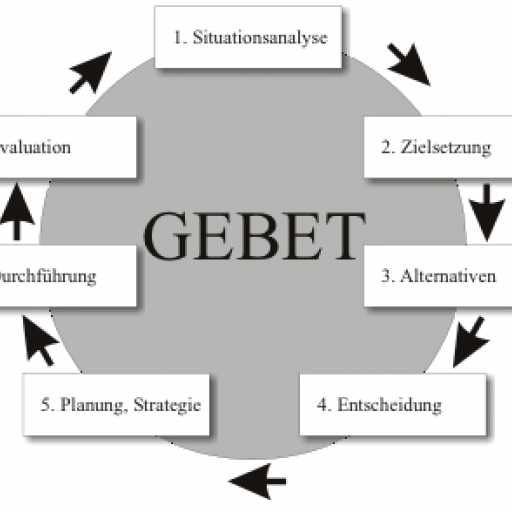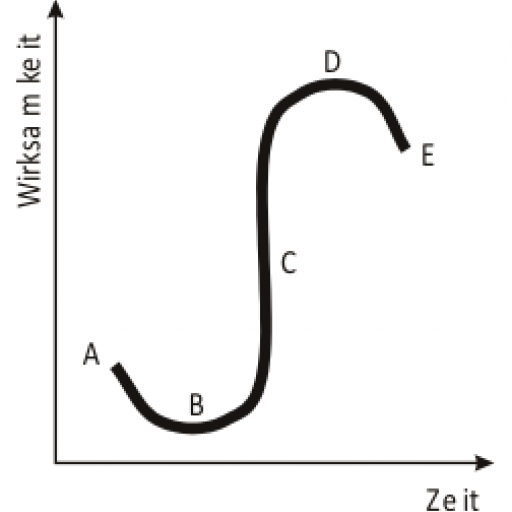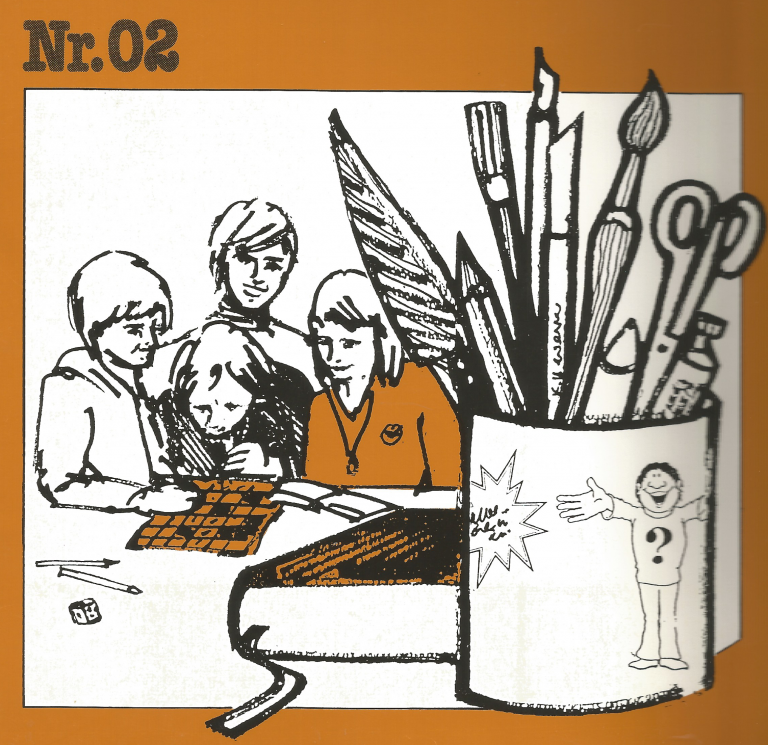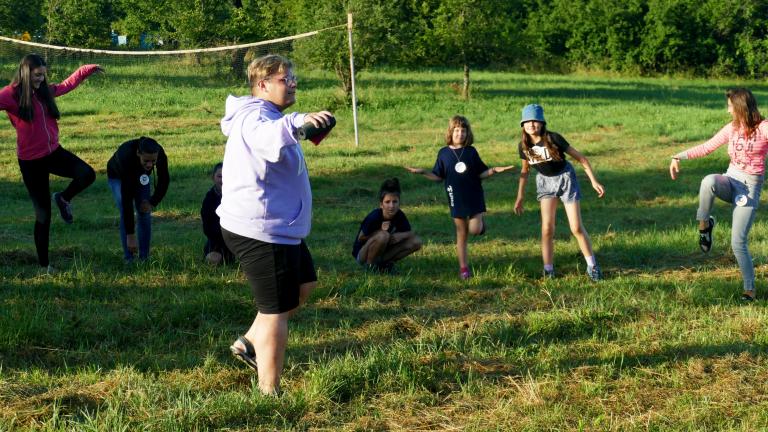Are our offers still customer-oriented? Do they still meet the needs of our time? These are questions that we have to ask ourselves again and again, if we do not want to lose the status and thus the children in our society.
Introduction
A catchword which (in this context) appears again and again is called: "New Forms". Thus, flourishing works from all over the world are sought, analyzed and copied. Quite often, however, after the initial enthusiasm for the "new form", disappointment sets in, because it has not been adapted to the local situation and success fails to materialize. In addition, it is often only copied and not understood. In fact, as a rule, the success of such "new forms" does not lie in a structural implementation, but in the heart attitude of the leaders.
The following is therefore not a presentation of "new forms", but a model with which every leader can find out for himself the appropriate method for his work.
Prayer
If we are truly doing our children's and youth ministry for God, then we should also ask Him for wisdom and guidance. After all, who knows better what our kids and teens need than our Father in heaven? If we try to solve our problems ourselves, we are like the Pharisees to whom Jesus said,
"Let them speak! They want to lead the blind and are themselves blind. If one blind man leads another, both will fall into the pit." Matthew 15:14
So be aware every step of the way that prayer is at the center. All of the following will only serve their purpose if they rest on Jesus, the foundation - lest we fall into the pit.
1. Situation Analysis
As a rule, people do not look for "new forms" until the "old ones" no longer work. This is basically too late.
Each method goes through an S-curve.
A = It is started.
B = After some start-up difficulties...
C = ...it (hopefully) leads to the desired success
D = After some time the method reaches its maximum efficiency
E = If the method is stubbornly continued, it loses its effect over time.
So if we look for "new forms" only at point E, we have already lost energy again. At point C at the latest, we should consider whether the "new form" is still need-based, so that we can start with the next method at point D.
So the point is to get an early picture of the prevailing situation. These results are later the basis for designing a "new shape". It is therefore important that the situation analysis is done as accurately as possible.
By situation analysis we mean the systematic clarification of the current situation in terms of all the components that determine it. It is therefore a matter of looking at the existing situation from all points of view and formulating it in such a way that it can also be understood as objectively as possible by outsiders. It is particularly important that the analysis is not just about your point of view, but that the other people concerned (children, young people, parents, community...) are also asked for their opinion. Their needs and fears must be known. Their wishes and not yours are the focus. Or to use an image: "The worm must taste good to the fish and not to the fisherman!"
To achieve this, we have several options at our disposal:
=>observations, interview techniques, resource analysis, visualization, document analysis...
Situational analysis is not only important at the beginning, but also needs to be repeated during the process. Only then can we decide if we are still on the right track.
2. goal setting
Now that we know our current situation, we need to agree on the goal we want to achieve. We can only act effectively if we also know where we want our actions to take us.
Goals should be as specific and direct as possible. Open-ended goals such as, "We want to reach more children!" are of little help in giving direction to the process. Here the questions are: "By what time do we want to reach more children? How many more children do we want to reach? What target group do we want to reach? What do we do with the children?"
According to the above formulation of the goal, the goal would have been reached if after five years the preacher's son also joins the group and it has now grown by one child. Surely this cannot be it!
The formulation of goals should be a guideline for our actions and help us to check the result we have achieved. Therefore, it is also useful to set different sub-goals before the project goal, so that the development can already be checked during the process.
3. Alternatives
After we have discussed the actual and the target state of our situation, the next step is to design suitable methods and instruments to achieve the goal. In this phase it is important that the creative thinking process is not hindered. Every dream, every idea is allowed, no matter how outlandish or unrealistic. Words like "but, no, impossible, unrealistic, not..." are absolutely forbidden at this step.
Reserve at least two whole evenings for this step, where you can dream undisturbed. The more people you are, the better! This time is not wasted at all, but will help you to find new, unconventional ways. But don't forget to write down all your ideas. Work in a big and colourful way! Some methods you can use for this:
=>Mind map, brainstorming, brainwriting, future workshop...
Important: Don't try to find a decision the same evening!
4. Decision
Now you should have a plethora of different ideas in front of you. Some are absolutely unrealistic at first glance, while others are "stinking normal". Now it is a matter of finding out the "best" way on the basis of different criteria. To do this, all the effects of a method that occur must be recorded and analysed. The following questions can help you with this:
- "What effects can be expected with this method?"
- "Are these effects desired and do they serve the kingdom of God?"
- "What side effects might occur?"
- "Are the side effects acceptable?"
Please ask these four questions for each proposal from point 3 and start to roughly probe. Finally, you can rank the method using established criteria. Possible decision criteria can be:
=>Cost/benefit (effort/return), duration, suitability for the addressee, experience with methods, creativity...
At this point it is also important that you do not start directly with the concrete implementation. Take a few days after this point to examine the decision before God. At this point at the latest, many fall into the temptation to neglect the central point of prayer and to tackle the project on their own. This would not only be unwise, but downright negligent
So bring your project before God and after a few days gather your answers, thoughts, images, impressions... which you have received from God. Only now a decision can be made.
5. planning, strategy
Now that the decision has been made on a certain "form", it is a matter of creating a precise plan of how we want to achieve the formulated goal step by step. So we develop a plan by imagining and writing down the individual action steps, their sequence and execution. Possible tools for this are:
=>Schedule, flowchart, resource analysis, work plan, checklists...
Often the actual planning reveals that the situation analysis was not done completely and more information is needed to implement the method. Since all parts of a process can never be predicted, the plan and action steps must be permanently reviewed and adjusted based on the goal formulation.
6. Implementation
This phase is now about achieving the project goal with the activities defined in the planning. Your "new form" has its birth!
During the implementation, the individual steps are to be continuously evaluated and checked by means of the sub-goals. The following three points should be kept in mind:
A.) Is the timing right for the start?
Have we made all the clarifications? Are we really ready as a team? Are all stakeholders (children, parents, community...) fully informed?
B.) Are we really trading on the new method?
Every human being is a creature of habit. The danger of falling back into the old ways under pressure is great. Therefore, it is important that all leaders stand behind the new method and make each other aware of old patterns of behavior.
C.) Correcting Hypotheses.
Because of new information, the original plan may prove flawed. The team must be prepared to incorporate new experiences into the plan.
7. Evaluation
In the evaluation, the work should be checked against the formulation of the objectives. Here we distinguish the success control (question: Have the intended goals been achieved?) and the impact analysis (question: What effects have occurred unintended or undesired?). To do this, we have the following options:
=>Sentiment barometer, site assessment, observations, interviews...
Depending on the evaluation, it will now be necessary to start the cycle anew with a situation analysis...
By the way...
If you have started a "new form", I would be burning to hear about it. Do let me know your experience adrian.jaggi [at] besj.ch (adrian[dot]jaggi[at]besj[dot]ch).
Source credits
- Title image: Juropa
- Content and graphics: A. Jaggi, BESJ
Content may be automatically translated. Help improve the quality of the translation with your editing!





